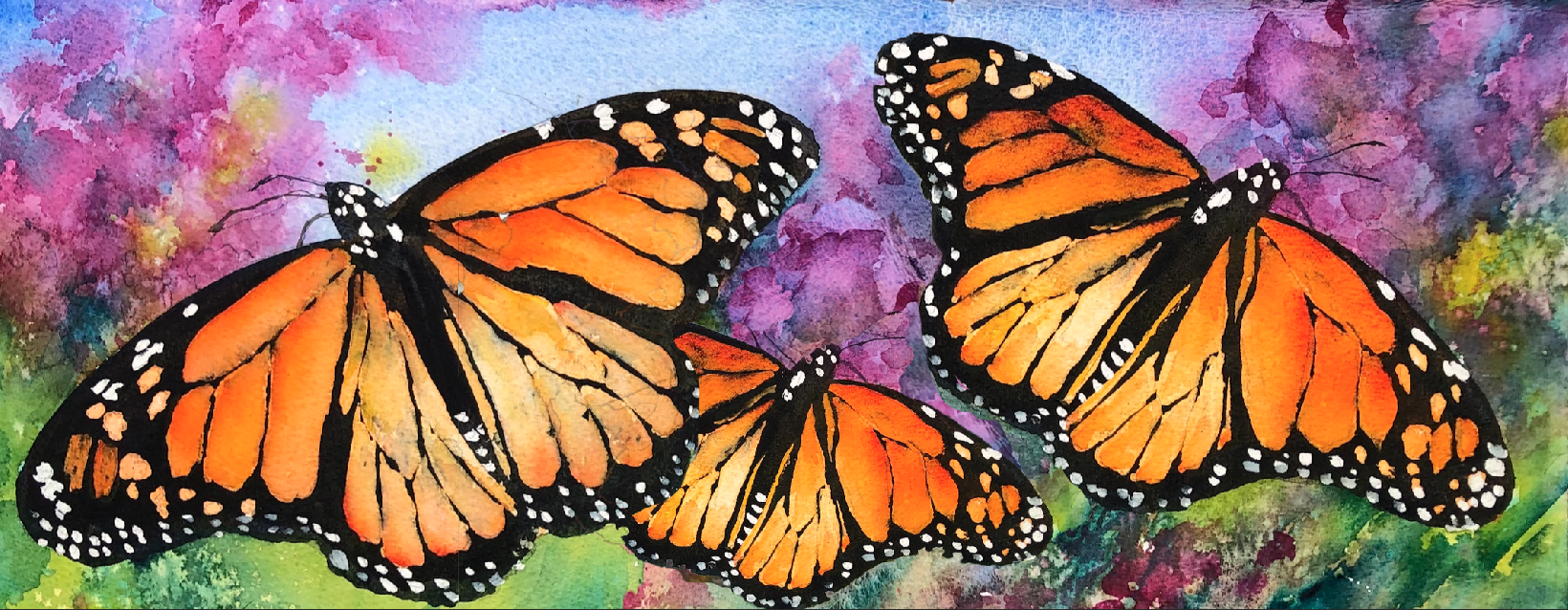Independent Study
What's included
Monarch garden only includes the introductory lesson from the full course.
To help keep things really simple, this course is designed to be a fun and easy way to learn the basic process, before continuing on to the full course that includes the more advanced Monarch cluster painting.
Example Curriculum
- Getting started (0:25)
- Reference photos
- Line drawing
- Monarch Garden 1 _ create the composition (5:51)
- Monarch Garden 2 _ add color to the wings (8:04)
- Monarch Garden 3 _ mask (7:18)
- Monarch Garden 4 _ wet-into-wet (26:23)
- Monarch Garden 5 _ background (2:37)
- Monarch Garden 6 _ details (6:33)
- Monarch Garden 7 _ layer color (10:21)
The Western monarch butterfly is near extinction, Why care?
Besides the monarch’s intrinsic value and beauty, it and other insects contribute to our wellbeing in these important ways:
The fragile monarch serves as a canary in the coal mine to alert us to environmental sickness. Monarchs and honeybees could be the first to fall before a collapse. Mary Ellen Hannibal, the San Francisco-based author of “Citizen Scientist,” is clear: “Insect life is at the very foundation of our life-support systems. We can’t lose these insects.”
Monarchs and other insects are pollinators. Monarchs pollinate mostly wildflowers and other flowers. As they suck out the nectar, their legs catch and transfer pollens. Bees and bumblebees are the primary workers, pollinating about 70 percent of our fruits and vegetables. Without pollinators we could be forced to hand-pollinate fruit trees, as many farmers in China do today...more
